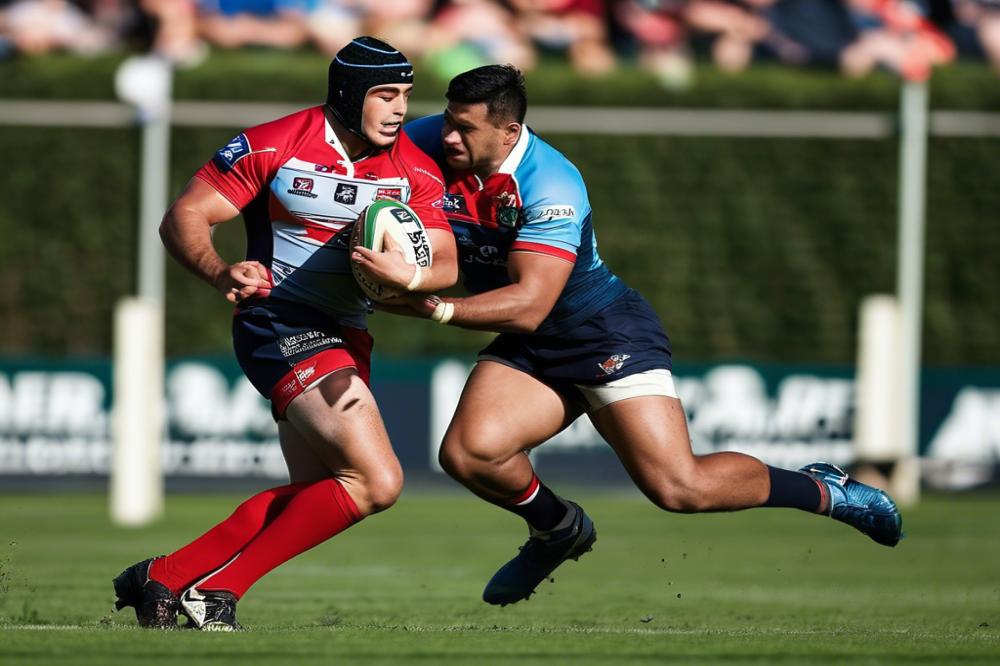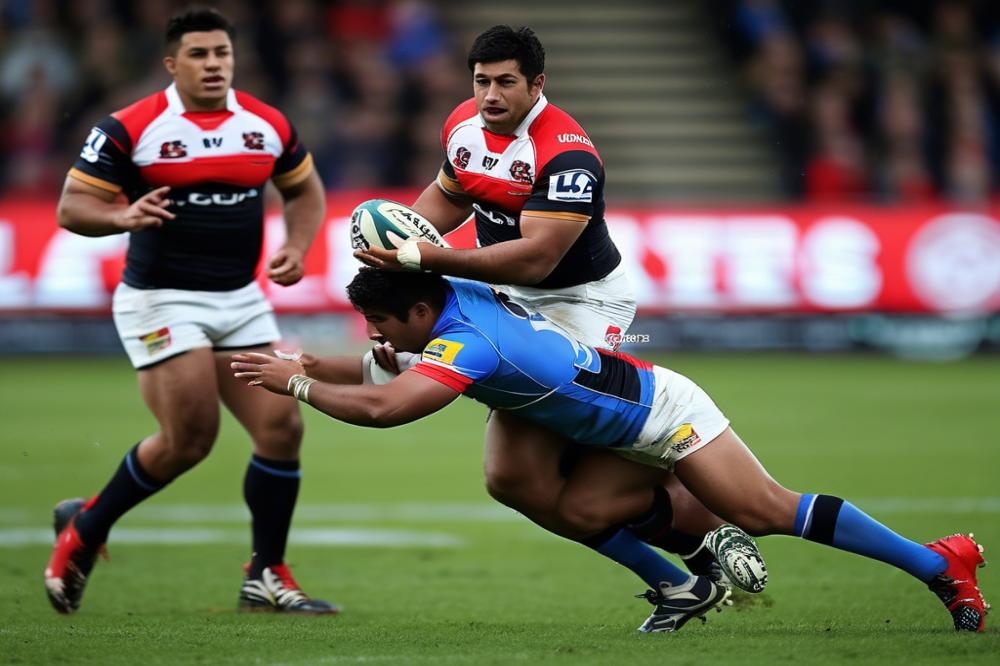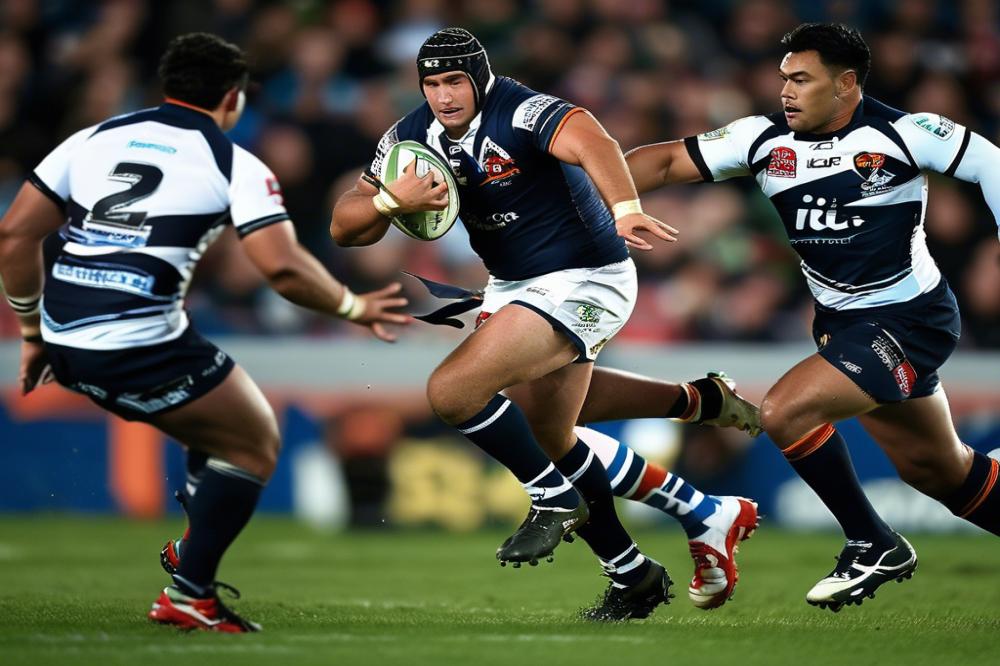The Importance of Tackling in Rugby League
Tackling is a cornerstone of Rugby League gameplay, serving as both a defensive shield and an offensive strategy. It acts as a barrier against the opposing team, and a well-executed tackle can shift the momentum of the game in an instant. Players who cultivate their tackling abilities often steer their teams to victory, showcasing the significance of this crucial aspect of the game.
A team’s defense heavily relies on the efficiency of its tackling efforts. Breaking down an attacker’s advance hinders scoring opportunities for the opposition. On the other side, a strong tackle can disarm the other team and create opportunities for turnovers. The dual nature of tackling not only protects but also generates chances for scoring.
Mastering various techniques goes beyond simple brawls on the field. It involves understanding precision, timing, and body mechanics. When players consistently hone these skills, it reflects on the field, creating a ripple effect that enhances the group’s overall performance.
Effective tackling intertwines with strategic planning. Coaches and players alike recognize the need for diverse approaches to maintain competitive edges. In such a fast-paced game, having reliable and skilled tacklers is an indispensable resource.
Not only does proficiency in tackling foster individual player growth, but it also solidifies a team’s standing. Opponents underestimate seasoned tacklers at their peril. This discipline is not merely a physical undertaking; it’s a tactical maneuver that can redefine a match’s outcome. Teams with a strong grasp of tackling have a greater chance of achieving brilliance and triumph.
Understanding these nuances can be the difference between mediocrity and excellence. It is #anchor_text_1# for any team aiming for long-term success. A close examination of #anchor_text_2# is essential for those battling on the field.
Understanding Tackling in Rugby League

Tackling stands as an integral element in Rugby League, demanding not just physical prowess but mental acuity. Maintaining the correct stance becomes essential for effective defending. Players need feet shoulder-width apart and knees slightly bent. This ensures balance and readiness for any move. Without proper positioning, even the strongest player might fail to stop an opponent. Eyes should be fixed on the ball carrier’s midsection, not their feet.
Timing is crucial in every tackle. Anticipating the opponent’s next step can make the difference between success and failure. A poorly timed move can lead to penalties or missed opportunities. Strong tackles can shift the momentum of the game. Often, a single superb interception might inspire the whole team. It contributes to defensive solidity and boosts team morale.
Effective tackling is integrated into the team’s strategic plans. Coaches often develop systems ensuring all players understand their roles. This involves understanding when to engage the opponent and when to fall back. Coordination in defense can thwart the most creative offenses. A cohesive unit thinks as one, adjusting the dynamic play quickly. The ability to tackle well enhances a team’s chances of gaining possession.
Overall, mastering tackling techniques builds a solid foundation. It underscores the importance of cooperation, skill, and agility. Persistently honing these techniques in Rugby League pays dividends both individually and collectively.
Fundamental Tackling Techniques

Front-On Tackle
The front-on tackle stands as a core component of rugby league. Players face their opponent directly in this technique. Timing and body position play a crucial role. Aim to hit with your shoulder into the opponent’s midsection. Drive through with the legs and wrap the arms tightly. Accurate execution minimizes risk and maximizes power. This tackle type creates a strong, effective stop.
Side Tackle
A side tackle addresses players running laterally. It requires agility and quick reflection. Focus on approaching from an angle. Lock in securely using the shoulder and arms. Balance and swiftness aid in bringing the opponent down. Proper technique prevents slips and ensures control. A side tackle often results in the opponent being forced out of play.
Cover Tackle
The cover tackle provides support from behind. As a defending player, anticipate the attacker’s next move. Close in swiftly from the rear flank. Proper positioning guarantees a solid grip. Use momentum to drag the player down effectively. This technique demonstrates the value of anticipation. Cover tackles are often made in hurried situations.
Mastering these fundamental techniques is essential for both safety and success on the field. Without a strong grasp of these basics, players put themselves and others at risk. Understanding these techniques elevates performance and reduces mistakes. It fosters confidence and allows for more advanced tactics to be applied smoothly. Implementing these tackles with precision ensures competitive advantage.
Advanced Tackling Techniques

Diving deep into advanced tackling methods reveals techniques like the ‘smother tackle,’ ‘gang tackle,’ and ‘hit-and-stick tackle.’ Mastery of these advances can be crucial in high-pressure scenarios. Each technique plays a vital role on the field.
Smother Tackle
A smother tackle covers the opponent completely. It aims to hold the player securely. This can stop an offload and reduce forward movement. A perfect choice in critical moments. It ensures the ball carrier is fully enveloped. Synchronization with teammates can amplify its effectiveness. A properly executed smother involves enveloping the ball quickly.
Gang Tackle
Multiple players converge for the gang tackle. Designed to overwhelm the ball carrier with numbers. Gang tackling can halt momentum effectively. It allows multiple defenders to share the physical toll. This method can be decisive in preventing dangerous line breaks. It also distributes the risk of missed tackles across several players. Strong communication among teammates is essential for timing.
Hit-and-Stick Tackle
The hit-and-stick tactic involves initiating a powerful contact. The tackler sticks to the opponent, halting their run. This technique minimizes the yards gained after contact. It’s potent in close-quarter defenses. Precision and strength are crucial for proper execution. Once hit, the goal is to wrap the player tightly. The ability to stop the runner without help showcases its effectiveness.
In the #high-pressure# world of rugby league, mastering these advanced techniques provides teams with an edge. Confidence in these maneuvers grows with practice, increasing their reliability during critical moments. Understanding and implementing these tackles can lead teams to victory.
Situational Tackling Strategies
Understanding situational tackling strategies is crucial in rugby league. Different scenarios call for varied techniques. In open play, tackles are often about speed and agility. Defenders aim to cover ground quickly and bring down fast-moving opponents. Here, anticipation is key. Players should read body language and predict the attacker’s next move.
Conversely, tackling in close-quarters demands strength and control. The game slows down when players are bunched together. This is where precise footwork matters. Defenders should position themselves correctly to prevent line breaks. Maintaining a low center of gravity helps in executing powerful, stable tackles.
Phases of the game require distinct strategies, too. During kick returns, tacklers must halt the momentum of an advancing player. A well-timed tackle here can prevent significant yardage gains. In contrast, during the last tackle of a set, forcing an opponent out of play is often a priority.
Each game moment presents its own challenges. Early in a match, energy conservation is important. Tackles should be effective yet efficient. Late in the game, fatigue sets in. Players need mental toughness alongside physical capability. Everyone looks to reduce the risk of injuries while making each tackle count. In rugby league, adapting to the ever-changing circumstances on the field is vital.
Training for Tackling
Drills and Exercises
Training for tackling in rugby league requires dedication and precision. Start with the basic stance. This is where every tackle begins. Players should practice maintaining a low center of gravity. Balance drills help with this. A firm stance keeps players steady. Next, focus on footwork. Quick feet make a difference. Try ladder drills to enhance agility and speed. Another drill is shadow tackling. With this, partners move side by side, mimicking each other’s actions. It enhances reflexes and timing. Tackle bags are also helpful. Players practice targeting and impact safely. This builds confidence.
Role of Coaching
Coaching is crucial in developing skilled tacklers. Coaches provide insights that players might miss. They offer tips on positioning and technique. Correct technique reduces injury risk. Coaches often stress the importance of tackling with the shoulder, not the head. They emphasize keeping the eyes open at the point of contact. This helps track movement. One of the best methods to instill these habits is repetition. The more a player tackles correctly, the more natural it becomes. Coaches also create diverse scenarios. This prepares players for real-game variety.
Use of Video Analysis
The modern game uses video analysis extensively. Watching playbacks offers unique insights. Players can see what they might have missed on the field. Videos highlight strengths as well as areas for improvement. This tool becomes invaluable for both coaches and players. Together, they dissect each tackle, focusing on form and timing. Analyzing famous tackles from professional games adds value. It provides examples of success to aim for. With each frame, players learn how to anticipate opponents’ moves. Video analysis transforms learning into visual experience. It solidifies lessons taught through practice.
Player Safety and Sportsmanship
In rugby league, preserving player safety while maintaining sportsmanship is crucial. Tackling is an integral part of this sport, but proper technique can significantly reduce the risk of injuries. Competitors need to balance aggression and respect. Using appropriate tactics respects opponents and keeps everyone on the field safer.
Good technique involves stabilizing your stance and keeping your head positioned correctly. This minimizes head impacts and reduces the chance of concussions. In addition, tackling with correct form prevents dangerous falls and awkward landings. Players must always keep in mind that safety of every participant is not optional, it’s essential.
Furthermore, sportsmanship demands that individuals respect their adversaries. Each match involves heated competition, but should never disregard the well-being of participants. Practicing clean tackles honors the spirit of rugby. This means understanding the significant responsibility that comes with every tackle.
Rugby players must also foster an environment where everyone feels protected. They should strive to uplift their team and their rivals alike. Observing the importance of empathy in such a robust game is key. After all, maintaining fairness promotes not just the game’s standards, but its humanity.
Balancing competitive play with a focus on welfare creates a sustainable sporting experience. By prioritizing responsible gameplay, both challenge and safety find harmony on the pitch. Good sportsmanship elevates the game beyond mere conflict. It transforms it into a testament of character and respect.
Mastering the Art of Tackling
In Rugby League, mastering effective tackling techniques is paramount. We’ve explored numerous methods to bring down opponents efficiently. Low tackles focus on the legs, causing disruption. A solid front-on tackle requires strength and timing. Each method has its own advantages depending on the situation.
Proper technique and body positioning are crucial. Missteps here lead to missed opportunities or penalties. Emphasizing correct form aids in injury prevention, serving a player well throughout their career. Teams emphasize tireless practice sessions. Consistent effort builds muscle memory, enabling seamless transitions from training to live matches.
Teams should prioritize communication. Defenders must constantly update their teammates about threats and positioning. This cooperation strengthens a team’s defensive wall. Recognize that rugby league thrives on momentum, and a successful tackle can shift the dynamics in your favor. Defensive mastery is as important as any offensive play, ensuring that no opportunity goes unchecked.
The best teams understand the integral role of defense. Effective tackling raises a team’s performance ceiling. Beyond personal skills, always focus on the collective effort. Mastery of technique provides the foundation, upon which teamwork can build. Keep refining techniques and expanding understanding of defensive play.
Committed teams rise above the rest. Investing time in practice results in superior on-field performance. Remember, whether you’re experienced or learning, improvement remains a constant goal. As players perfect their craft, they elevate not just personal ability but also their team’s overall defensive capabilities. Mastering the art of tackling can indeed become the cornerstone of a formidable rugby league team.
Understanding the essentials ensures no aspect of defense is overlooked. Striving for excellence, do not neglect the impact of proper technique. Teams that prioritize continuous skill enhancement will shine brightly in competitive matches. Achieving defensive prowess requires dedication, effort, and a deep respect for the nuances of the sport.



